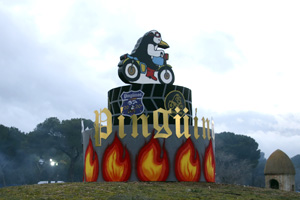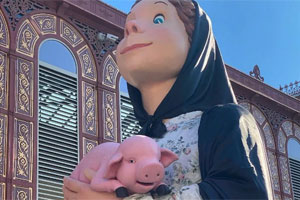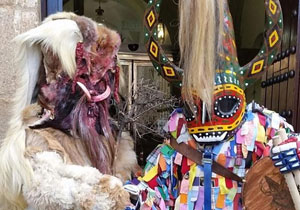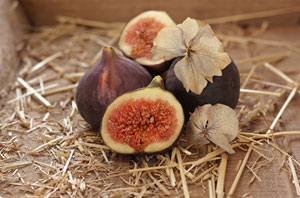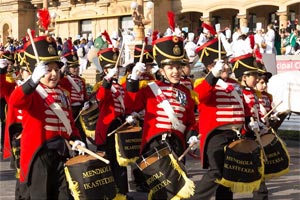Ducal Festival of Pastrana
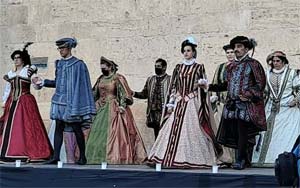
What is the Ducal Festival of Pastrana?
The Ducal Festival of Pastrana is a historical and cultural event that takes place in the town of Pastrana, in the province of Guadalajara. This festival is known for its representation of the history and traditions of Spanish nobility.
The Ducal Festival of Pastrana recreates the 16th century, specifically the period when the Princess of Eboli, Ana de Mendoza y de la Cerda, resided in the Ducal Palace of Pastrana. Ana de Mendoza was an important figure in the Spanish court and a woman of great influence in her time.
During the festival, the town of Pastrana transforms into a historical stage where numerous theatrical performances and cultural activities take place. The residents of Pastrana dress in period costumes, recreating the life and customs of the 16th century.
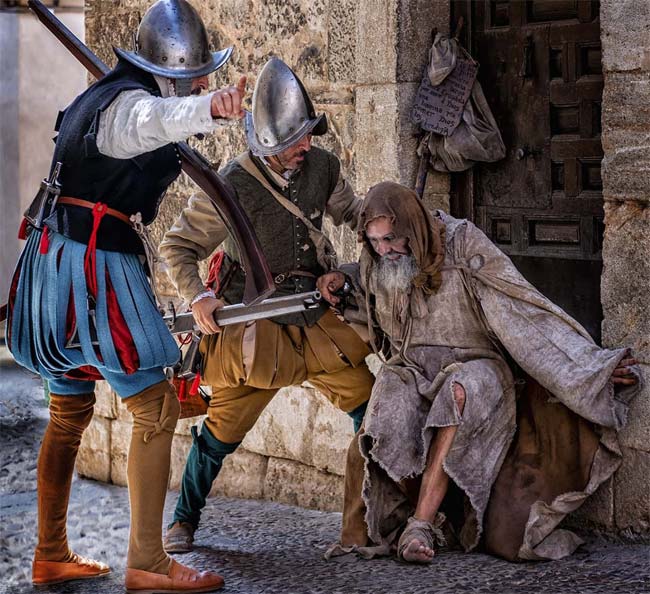
One of the highlights of the festival is the historical parade, in which numerous actors portray relevant historical characters such as nobles, ladies, knights, and members of the court. The parade goes through the streets of the town and allows visitors to immerse themselves in the atmosphere of the time.
In addition to theatrical performances and the parade, the Ducal Festival of Pastrana offers other activities such as Renaissance music concerts, art exhibitions, workshops, and craft markets. Visitors have the opportunity to explore the historical heritage of Pastrana by visiting the Ducal Palace and other places of interest.
The Ducal Festival of Pastrana is an opportunity to relive the history and culture of 16th century Spain. It provides a unique experience where visitors can immerse themselves in the past and enjoy a wide variety of cultural activities related to nobility and court life of that time.
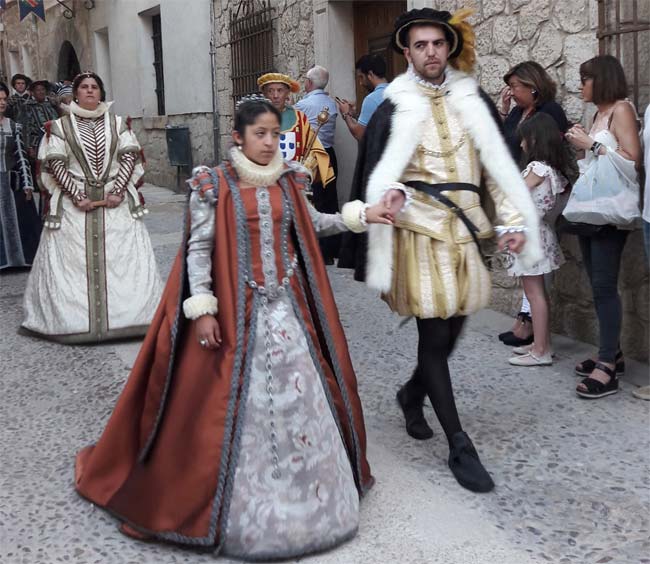
Origin and history
The Ducal Festival of Pastrana has its roots in the history of the town of Pastrana, located in the province of Guadalajara. Pastrana was an important noble center during the 16th and 17th centuries, and its history is closely linked to the figure of the Princess of Eboli, Ana de Mendoza y de la Cerda.
Ana de Mendoza was a woman of great significance in the Spanish court during the reign of Philip II. She married Ruy Gómez de Silva, the Prince of Eboli, and after his death, Ana became an influential figure in the court. After being widowed, Ana decided to retire to Pastrana, where she built the Ducal Palace.
The Ducal Palace of Pastrana became the center of social and cultural life for Spanish nobility. Ana de Mendoza transformed Pastrana into a meeting place for intellectuals, artists, and influential people of the time. During her stay in Pastrana, Ana promoted cultural development and the protection of artistic and architectural heritage.
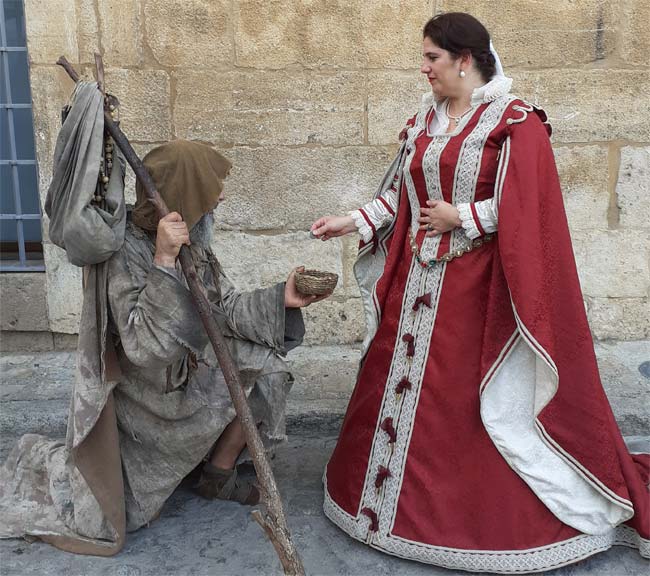
The Ducal Festival of Pastrana was born as an initiative to commemorate and preserve the history and legacy of Pastrana and the Princess of Eboli. The first edition of the festival took place in 1981 and since then, it has become an annual event that attracts visitors from all over Spain and beyond.
The festival's main objective is to recreate the life and customs of the 16th century, as well as to highlight the historical role of Pastrana and its importance in the history of Spain. Over the years, the Ducal Festival of Pastrana has grown in popularity and has established itself as one of the most prominent events in the region.
Today, the festival includes a wide variety of cultural activities such as historical parades, theatrical performances, Renaissance music concerts, art exhibitions, and craft markets. Participants and visitors have the opportunity to immerse themselves in history and enjoy the rich cultural heritage of Pastrana and the 16th century.
In summary, the Ducal Festival of Pastrana emerges as a celebration of the history and culture of the town, especially the figure of the Princess of Eboli. Through its performances and activities, the festival seeks to keep the historical memory alive and promote the cultural heritage of Pastrana.
What to see in Pastrana
In Pastrana, a charming town in the province of Guadalajara, there are several points of interest worth visiting. Here are some of the main tourist attractions in Pastrana:
- Ducal Palace: The Ducal Palace of Pastrana is one of the architectural gems of the town. Built in the 16th century, it was the residence of Ana de Mendoza, the Princess of Eboli. The palace features beautiful gardens, an impressive facade, and several rooms decorated with furniture and artworks from the period.
- Collegiate Church of Our Lady of the Assumption: This 16th-century Gothic church is another prominent monument in Pastrana. Its interior houses numerous chapels, a Renaissance altarpiece, and beautiful stained glass windows. Additionally, the tomb of Cardinal Lorenzana, an important figure in Spanish history, can be found here.
- Plaza de la Hora: Located in the center of Pastrana, Plaza de la Hora is an emblematic place in the town. Here you will find the Casa del Deán, a historic building that used to house the dean of the Collegiate Church. The plaza is a charming space to relax, enjoy the architecture, and soak in the traditional atmosphere of Pastrana.
- Convent of San José: This former convent of enclosed nuns is known for being the place where Saint Teresa of Jesus founded the Order of Discalced Carmelites in 1569. The convent features a church, a cloister, and a room that showcases the daily life of the Carmelite nuns.
- Parish Museum: Located in the Casa del Doncel, the Parish Museum displays a collection of religious art, including paintings, sculptures, and liturgical objects. The museum is an opportunity to appreciate the religious and artistic heritage of the town.
- City Walls: Pastrana preserves parts of its ancient medieval walls. While strolling through the town, you can admire fragments of the walls and reach one of the historical entrances to the city.
In addition, the town offers rural charm, cobbled streets, and picturesque corners that are worth exploring. You can also enjoy the local gastronomy, which includes traditional dishes such as roasted lamb and typical sweets of the region.
What to eat in Pastrana
In Pastrana and its surroundings, you can enjoy delicious traditional cuisine that combines the flavors of Castilian and Manchego cuisine. Here are some typical dishes you can try when visiting Pastrana:
- Roasted lamb: Roasted lamb is an emblematic dish of the region. Prepared with suckling lamb, it is slowly cooked in a wood-fired oven, giving it a tender and juicy texture. It is a traditional and savory dish that you should not miss.
- Roast suckling pig: Another traditional dish in the area is roast suckling pig. Like the lamb, it is slowly cooked in a wood-fired oven until the skin is crispy and the meat is juicy. It is a highly appreciated delicacy in Castilian cuisine.
- Migas: Migas is a dish of humble origins but full of flavor. It is made with crumbled bread, olive oil, garlic, and different ingredients such as chorizo, bacon, or grapes. It is a perfect choice for lovers of comforting food.
- Gachas: Gachas is a traditional dish prepared with almond flour or cornmeal, water, olive oil, and salt. It is cooked slowly until it reaches a creamy texture and is usually served with pieces of chorizo, bacon, or sardines.
- Duelos y quebrantos: This dish consists of scrambled eggs with pieces of chorizo and bacon. It is a hearty and delicious option for breakfast or lunch.
- Typical sweets: In Pastrana, you will also find a variety of traditional sweets to satisfy your palate. These include "flores manchegas" (Manchegan flowers), "buñuelos de viento" (wind fritters), "rosquillas" (doughnuts), and "mantecados" (shortbread cookies). These sweets are perfect to accompany a cup of coffee or tea.
In addition to these typical dishes, in the restaurants and bars of Pastrana, you can also enjoy a wide selection of cheeses, cured meats, and wines from the region. The gastronomy of Pastrana will provide you with an authentic and flavorful culinary experience.

